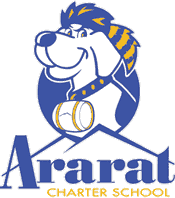- What is a School Accountability Report Card (SARC)?
Since November 1988, state law has required all public schools receiving state funding to prepare and distribute a SARC. A similar requirement is also contained in the federal Elementary and Secondary Education Act (ESEA). The purpose of the report card is to provide parents and the community with important information about each public school. A SARC can be an effective way for a school to report on its progress in achieving goals. The public may also use a SARC to evaluate and compare schools on a variety of indicators. - What information does the SARC contain?
Although there is great variation in the design of school report cards, they generally begin with a profile that provides background information about the school and its students. The profile usually summarizes the school’s mission, goals, and accomplishments. State law requires that the SARC contain all of the following:- Demographic data
- School safety and climate for learning information
- Academic data
- School completion rates
- Class sizes
- Teacher and staff information
- Curriculum and instruction descriptions
- Postsecondary preparation information
- Fiscal and expenditure date
- How often must a SARC be updated?
School report cards must be updated annually and published by February 1. - How are schools required to distribute the SARC?
State law generally encourages schools to make a concerted effort to notify parents of the purpose of the report cards and to ensure that all parents receive a copy of the report card for the school their child attends. Specifically, schools are required to notify all parents about the availability of the SARC and to provide parents with instructions about how the SARC can be obtained both through the Internet (if feasible) and on paper (upon request). If 15% or more of a school’s enrolled students speak a single primary language other than English, state law requires that the SARC also be prepared and made available to these parents in the appropriate primary language. - How can a parent obtain a SARC?
Parents with Internet access can go to the CDE Find a SARC Web page . This Web page contains SARC Reports that have been provided to the California Department of Education (CDE) by the school/local educational agencies (LEAs)s. The SARC Reports are posted in either of the following three forms: (1) an online SARC Report completed via the Web Application, (2) an uploaded vendor-created or custom-created PDF copy of the completed SARC, or (3) an accurate URL to the Web site address where the SARC is posted on the school/LEA Web site.On the CDE Find a SARC Web page, simply begin typing in the search box. You can search by school name, County-District-School (CDS) code, district name, county name, or city name. You can sort any column by selecting the down arrow located at the top of each column. Once you locate the school’s SARC that you desire to view, select the icon located in the View SARC column.Contact the school or district if the school’s SARC report or Web link to their SARC report is not available on the CDE Find a SARC Web page or to obtain a hard copy of their SARC report.
. This Web page contains SARC Reports that have been provided to the California Department of Education (CDE) by the school/local educational agencies (LEAs)s. The SARC Reports are posted in either of the following three forms: (1) an online SARC Report completed via the Web Application, (2) an uploaded vendor-created or custom-created PDF copy of the completed SARC, or (3) an accurate URL to the Web site address where the SARC is posted on the school/LEA Web site.On the CDE Find a SARC Web page, simply begin typing in the search box. You can search by school name, County-District-School (CDS) code, district name, county name, or city name. You can sort any column by selecting the down arrow located at the top of each column. Once you locate the school’s SARC that you desire to view, select the icon located in the View SARC column.Contact the school or district if the school’s SARC report or Web link to their SARC report is not available on the CDE Find a SARC Web page or to obtain a hard copy of their SARC report. - How can a parent find out more about California’s public schools?
If you have questions or need information about a specific school, you can call or write to the school or the district office. You can also schedule an appointment to visit the school and meet with the school’s administrators and staff.
Questions: SARC TEAM | [email protected] | 916-319-0406

